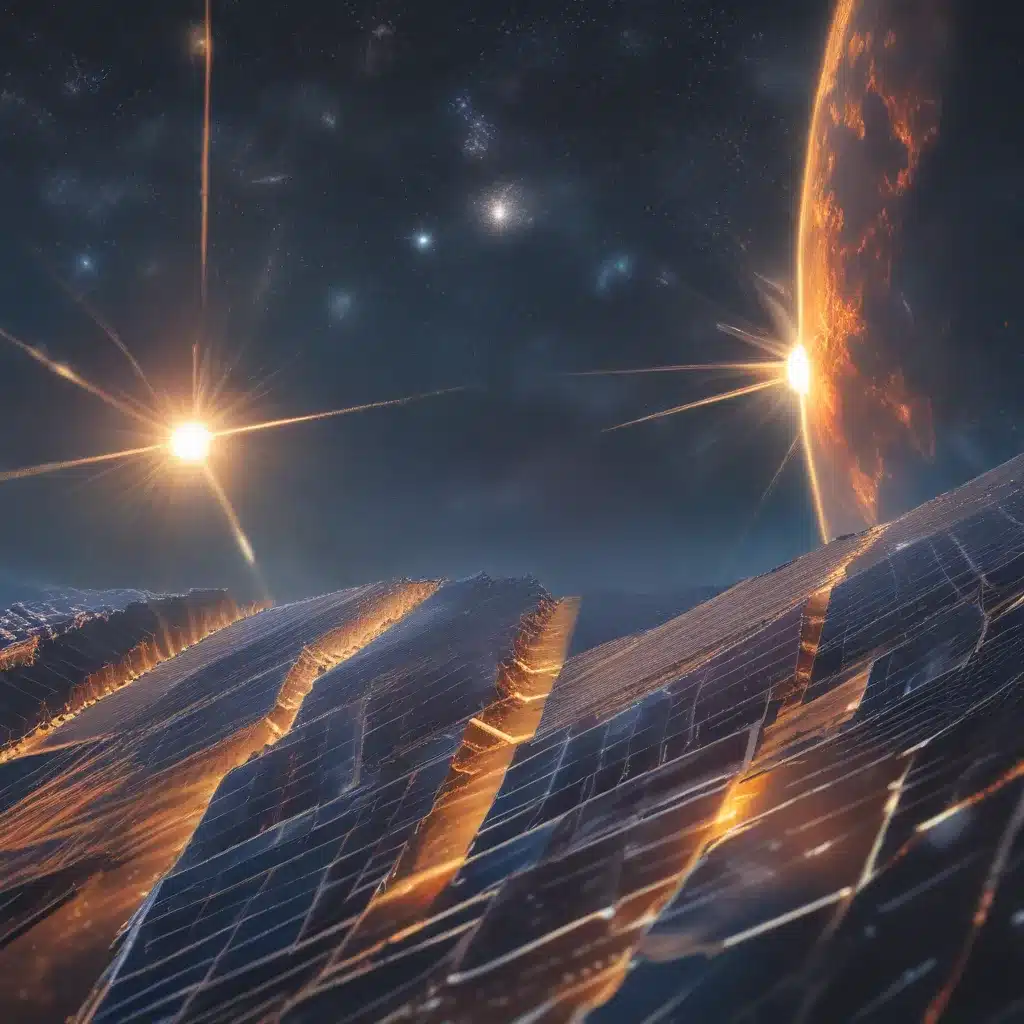
Pushing the Boundaries of Solar Energy Production
As the world becomes increasingly conscious of the need for renewable energy solutions, the solar industry has been rising to the challenge, consistently exceeding expectations and outperforming even the most optimistic projections. And at the forefront of this solar revolution are the remarkable bifacial solar panels – the latest innovation that is truly redefining the solar landscape.
I’ll never forget the day I first learned about bifacial solar technology. I was attending a local community event hosted by Solar A Systems Inc., a leading solar energy solutions provider in my area. As I chatted with the knowledgeable team, they enthusiastically shared the details of their latest project – a solar array featuring these cutting-edge bifacial modules.
The Power of Bifacial Solar
“Bifacial solar panels?” I asked, intrigued. “How are they any different from the standard panels I’ve seen on rooftops around town?”
The Solar A Systems representative smiled, clearly excited to share this breakthrough technology. “These panels,” she explained, “are designed to capture sunlight on both the front and the back, allowing them to generate significantly more energy than traditional monofacial panels.”
My eyes widened as she dove into the specifics. Apparently, the dual-glass construction of bifacial modules enables them to absorb light reflected off the ground or any other surface behind the panel, in addition to the direct sunlight hitting the front. This ingenious design, she told me, can result in energy output gains of up to 25% or more compared to their single-sided counterparts.
Putting Bifacial to the Test
Eager to learn more, I decided to dig deeper into the research on this revolutionary technology. And what I found was truly impressive.
Trina Solar, a leading solar energy solutions provider, conducted a comprehensive study to quantify the real-world performance of bifacial modules. They set up a test site in Changzhou, China, where they compared the energy output of bifacial panels to traditional monofacial ones across three different surfaces: grass, sand, and a white-painted area.
The results were nothing short of astounding. On the grass, the bifacial modules delivered a 52% energy gain over their monofacial counterparts. But when combined with a solar tracker, the energy gain skyrocketed to an incredible 1,057%! And on the sand, the bifacial panels with a tracker outperformed the standard modules by a staggering 2,442%.
“Wait, did you say 2,442%?” I exclaimed, nearly spilling my coffee. The Solar A Systems representative nodded, her smile growing even wider. “That’s right,” she confirmed. “Bifacial solar is truly revolutionizing the industry.”
Defying Expectations
What’s perhaps most remarkable about these findings is that the bifacial modules with trackers even managed to surpass the theoretical gains that one would expect from the combination of bifacial technology and tracking systems.
According to Utility Dive, the test revealed that the bifacial modules with a tracker on the grass achieved a 195% power gain, which was 4% higher than the anticipated 155% gain based on the individual contributions of the bifacial design and the tracking system.
“This just goes to show how much more efficient and productive these bifacial panels can be,” the Solar A Systems representative noted. “Project managers, homeowners, and other solar PV users can now make far more accurate ROI calculations, knowing that these panels will outperform even their wildest expectations.”
A Brighter Future for Solar
The implications of these findings are truly game-changing for the solar industry. As Garador, a UK-based garage door manufacturer, has discovered, the superior performance of bifacial solar panels can translate directly to substantial cost savings and a faster return on investment for solar energy projects.
Garador, one of the first companies in the UK to embrace solar power for its manufacturing operations, has been closely monitoring the performance of its recently installed 1,600-panel solar array. And the results have been nothing short of extraordinary.
“Even during the shorter, darker days of winter, our new renewable energy system has continued to outperform our expectations,” says Garador’s Managing Director, Jon Watson. “The latest figures show that our solar panels are making a strong and consistent contribution to our power requirements, far exceeding what we had predicted.”
This is precisely the kind of real-world validation that the solar industry needs to inspire greater confidence and drive wider adoption of these cutting-edge technologies. And with the Inflation Reduction Act providing substantial incentives and support for domestic solar manufacturing, the future of solar energy in the United States looks brighter than ever.
A Sustainable and Profitable Future
As I left the Solar A Systems event, my head was spinning with all the remarkable advancements in solar technology. It’s clear that bifacial solar panels are poised to play a pivotal role in the renewable energy revolution, delivering unprecedented levels of energy production and unlocking new paths to profitability for solar project developers and homeowners alike.
But beyond the impressive numbers and technical specifications, what truly excites me about this technology is its potential to transform the way we think about and interact with solar power. By pushing the boundaries of what’s possible, bifacial solar panels are paving the way for a more sustainable, efficient, and cost-effective energy future – one that I can’t wait to be a part of.
So, if you’re considering going solar, or if you’re a solar energy professional looking to stay ahead of the curve, keep a close eye on the rapidly evolving world of bifacial solar technology. The future is bright, and it’s powered by the sun – from both sides.


